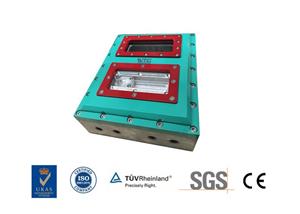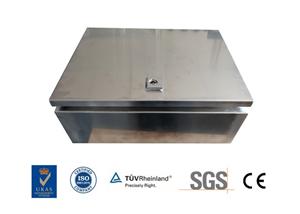About threads
First, the type of thread
According to the tooth shape, it can be divided into triangle, trapezoid, rectangle, zigzag and arc thread;
According to the direction of thread rotation, it can be divided into left-handed and right-handed;
It can be divided into single line and multi-line according to the number of spiral lines;
According to the shape of the thread body, it is divided into cylindrical and cone.
Second, the elements of the thread
Thread includes five elements: tooth shape, nominal diameter, number of threads, pitch (or lead), and direction of rotation.
Tooth shape
In the area of the cross section passing through the thread axis, the contour shape of the thread is called a tooth profile. There are triangular, trapezoidal, zigzag, arc and rectangular teeth.
Diameter
Threads have large diameters (d, D), middle diameters (d2, D2), and small diameters (d1, D1). When representing threads, the nominal diameter is used, and the nominal diameter is the diameter representing the size of the thread.
The nominal diameter of an ordinary thread is the large diameter.
3. Number of lines
A thread formed along a spiral line is called a single-thread thread, and a thread formed by two or more spiral lines equally spaced in the axial direction is called a multi-thread thread.
4. Pitch and lead
The pitch (p) is the axial distance between two adjacent points on the median line.
The lead (ph) is the axial distance between two points on the middle diameter line between adjacent teeth on the same spiral.
For single-threaded threads, lead = pitch; for multi-threaded threads, lead = pitch × number of lines.
5.Thread direction
The thread that is screwed in when turning clockwise is called the right-hand thread;
The thread that is screwed in when turned counterclockwise is called a left-hand thread.
Marking of threads
(1) Ordinary thread
Ordinary threads are most widely used. The threads on threaded fasteners (bolts, studs, screws, nuts, etc.) are generally ordinary threads.
Ordinary thread is divided into coarse tooth ordinary thread and fine tooth ordinary thread. Fine-threaded ordinary threads are mostly used on precision parts and thin-walled parts.
In the marking of threads, the pitch of ordinary threads with fine teeth must be noted, while the pitch of ordinary threads with coarse teeth is generally not marked.
(1) Feature code
M (for ordinary thread)
(2) Size code
Dimension code: Nominal diameter × pitch (lead and pitch of multi-threaded threads are to be noted, and pitch of ordinary thread for single-line coarse thread is not marked)
M10 is a single-thread coarse thread common thread with a nominal diameter of 10 mm and a pitch of 1.5 mm.
M10 × 1 is a single-thread fine-threaded ordinary thread with a nominal diameter of 10mm and a pitch of 1mm.
(2) Tolerance zone code of common thread
It consists of tolerance grade (number) and basic deviation (lower letters for external threads and uppercase letters for internal threads), such as 5g6g, 6g, 6H, 7H.
When the code of the thread diameter tolerance zone and the top diameter tolerance zone are different, please note them separately, such as: M10-5g 6g
When the middle diameter and top diameter tolerance zone codes are the same, only one code is noted, such as: M10 × 1-7H
Tolerance zone code is 6g or 6H (nominal diameter ≥ 1.6mm) is not marked.
(3) Turning length of ordinary thread
There are three types: long, medium, and short, which are represented by the codes L, N, and S, respectively.
M10-5g6g-S is short thread
M10-7H-L is a thread with a long turn-on length
When the thread is of medium twist length, the code N is not marked.
When special needs are required, the value of the twist length can be indicated.
M20 × 2-5g6g-40
(4) Turning code
LH is marked when left-handed and not marked when right-handed.
M10-7H-L-LH is left-handed thread
M10-7H-L is right-handed thread
(2) Pipe thread
Pipe threads are generally used in the connection of pipelines (water pipes, oil pipes, gas pipes, etc.). The marking of pipe threads shall be marked with guidelines, and the guide lines shall point to the large diameter of the threads.
Marking of pipe threads:
It consists of thread feature code, size code and rotation direction. The size code is not the size of the large diameter of the thread, but the size of the pipe (imperial). Right hand rotations are not indicated in the mark.
Example of marking for 55 ° unsealed pipe threads:
G: thread feature code of unsealed pipe thread;
G3 / 4: single-line right-handed cylindrical internal thread with size code 3/4;
G3 / 4A or G3 / 4B: single-line right-handed cylindrical external thread with size code 3/4, A and B in the mark are the tolerance grades of the middle diameter of the thread;
LH in G3 / 4LH and G3 / 4A-LH represents left-handed threads, and the thread pairs formed by the two are marked only with the external thread marking code.
Example of marking of 55 ° sealed pipe threads:
Rp3 / 4LH: single-line left-handed cylindrical internal thread with size code 3/4;
Rc3 / 4: Single-line right-handed conical internal thread with size code 3/4;
Rp / R13 / 4 LH and Rc / R23 / 4: The internal and external threads are screwed together to form a thread pair.
Rp: the thread characteristic code of the internal thread of the sealed cylinder;
Rc: the thread characteristic code of the internal cone of the seal;
R1: the characteristic code of the conical external thread that matches the internal thread of the cylinder;
R2: the characteristic code of the conical external thread matched with the conical internal thread;
(3) Trapezoidal thread and zigzag thread
Trapezoidal and zigzag threads are commonly used on screws that transfer motion and power. The trapezoidal thread works on both sides of the tooth when it works, while the zigzag thread works on one side when it works.
Trapezoidal and zigzag threads are marked like ordinary threads.
Example of marking of trapezoidal thread:
Tr40 × 7LH-7e, trapezoidal thread (thread characteristic code is Tr), nominal diameter φ40, single wire, pitch 7, left turn, middle diameter tolerance zone code 7e; medium turn length. Note: Only the middle diameter tolerance zone code is marked, and there are only two types of screwing lengths (codes N and L). For intermediate screwing lengths, N is omitted.
When the thread is multi-threaded, it is marked as:
Tr40 × 14 (P7) -7e, where "14" is the lead, "7" is the pitch, and the double-thread thread.
The trapezoidal screw thread pair is shown as: Tr40 × 7-7H / 7c, the tolerance band of the internal thread is in the front, and the tolerance band of the external thread is in the back.
Fourth, thread processing
1.Tapping thread and sleeve thread
Tapping:
The method of machining internal threads in a hole with a tap is called tapping.
The formula for calculating the diameter of the bottom hole: consider the plasticity of the material.
For steel parts and plastic materials: D hole = D-P
Hole D: Diameter of threaded bottom drill bit
D: Large diameter of internal thread
P: pitch
Example: We need to tap the M10 thread on steel to calculate the diameter of the bottom hole?
According to the formula D hole = D-P = 10-1.5 = 8.5mm
For cast iron and small plastic materials: D hole = D- (1.05 ~ 1.1) P
Example: What is the diameter of the bottom hole when we want to tap M10 thread on cast iron?
According to the formula, D hole = D- (1.05-1.1) × 1.5 = 8.35 ~ 8.42mm
Set of threads:
The method of using a die to cut an external thread on a round rod or pipe is called a sleeve thread.
Calculating formula of round rod diameter: d rod = d-0.13P
d bar: diameter of the front round rod with sleeve thread, mm
d: large thread diameter, mm
p: pitch, mm
Example: We want to make M10 screw. What is the diameter of the round rod?
Should be according to the formula d = d-0.13P
= 10-0.13 × 1.5 = 9.8mm




